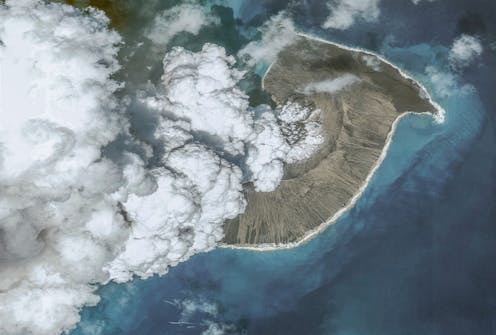
The Hunga Tonga-Hunga Ha'apai eruption reached an explosive crescendo on Jan. 15, 2022. Its rapid release of energy powered an ocean tsunami that caused damage as far away as the U.S. West Coast, but it also generated pressure waves in the atmosphere that quickly spread around the world.
The atmospheric wave pattern close to the eruption was quite complicated, but thousands of miles away it appeared as an isolated wave front traveling horizontally at over 650 miles an hour as it spread outward.
NASA’s James Garvin, chief scientist at the Goddard Space Flight Center, told NPR the space agency estimated the blast was around 10 megatons of TNT equivalent, about 500 times as powerful as the bomb dropped on Hiroshima, Japan, during World Word II. From satellites watching with infrared sensors above, the wave looked like a ripple produced by dropping a stone in a pond.
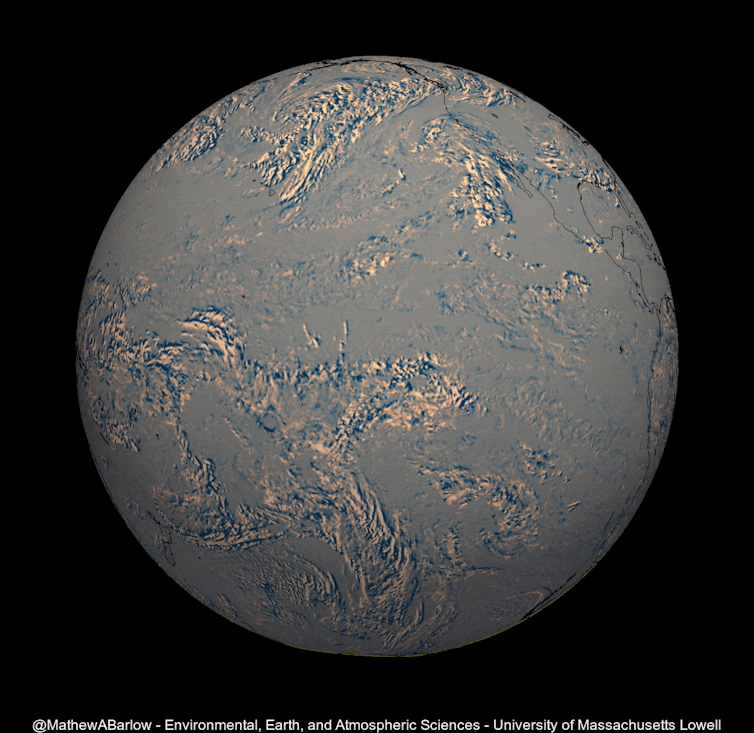
The pulse registered as perturbations in the atmospheric pressure lasting several minutes as it moved over North America, India, Europe and many other places around the globe. Online, people followed the progress of the pulse in real time as observers posted their barometric observations to social media. The wave propagated around the whole world and back in about 35 hours.
I am a meteorologist who has studied the oscillations of the global atmosphere for almost four decades. The expansion of the wave front from the Tonga eruption was a particularly spectacular example of the phenomenon of global propagation of atmospheric waves, which has been seen after other historic explosive events, including nuclear tests.
This eruption was so powerful it caused the atmosphere to ring like a bell, though at a frequency too low to hear. It’s a phenomenon first theorized over 200 years ago.
Krakatoa, 1883
The first such pressure wave that attracted scientific attention was produced by the great eruption of Mount Krakatoa in Indonesia in 1883.
The Krakatoa wave pulse was detected in barometric observations at locations throughout the world. Communication was slower in those days, of course, but within a few years, scientists had combined the various individual observations and were able to plot on a world map the propagation of the pressure front in the hours and days after the eruption.
The wave front traveled outward from Krakatoa and was observed making at least three complete trips around the globe. The Royal Society of London published a series of maps illustrating the wave front’s propagation in a famous 1888 report on the eruption.
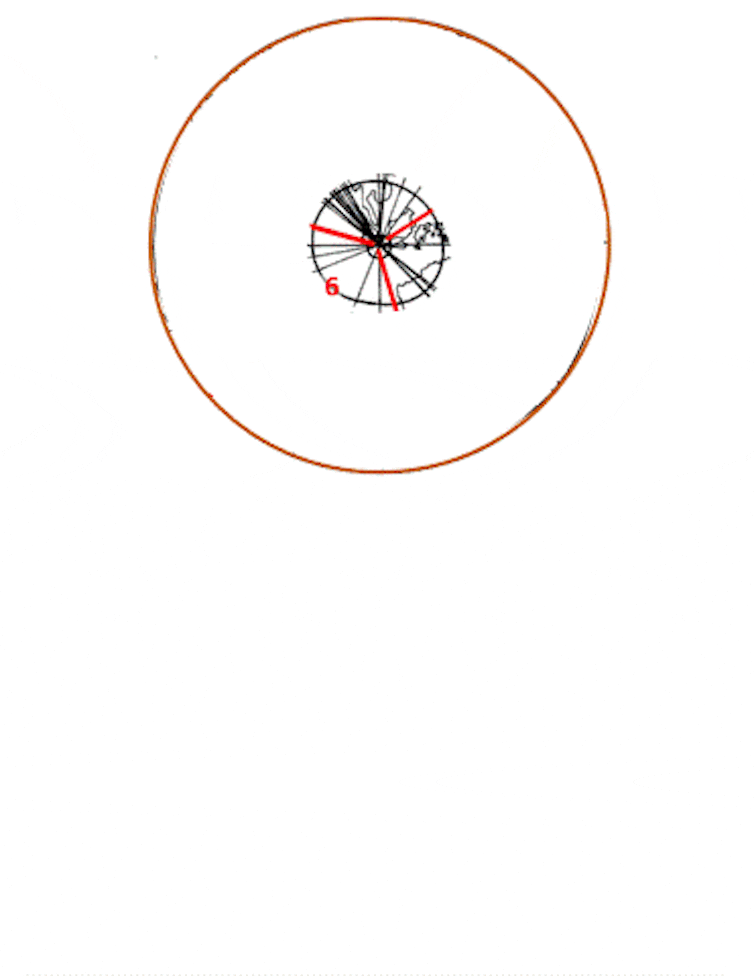
The waves seen after Krakatoa or the recent Tonga eruption are very low-frequency sound waves. The propagation occurs as local pressure changes produce a force on the adjacent air, which then accelerates, causing an expansion or compression with accompanying pressure changes, which in turn forces air farther along the wave’s path.
In our normal experience with higher-frequency sound waves, we expect sound to travel in straight lines, say, from an exploding firework rocket directly to the ear of onlooker on the ground. But these global pressure pulses have the peculiarity of propagating only horizontally, and so bending as they follow the curvature of the Earth.
A theory of waves that hug the Earth
Over 200 years ago, the great French mathematician, physicist and astronomer Pierre-Simon de Laplace predicted such behavior.
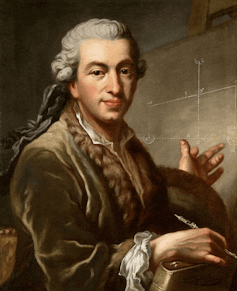
Laplace based his theory on the physical equations governing atmospheric motions on a global scale. He predicted that there should be a class of motions in the atmosphere that propagate rapidly but hug the surface of the Earth. Laplace showed that the forces of gravity and atmospheric buoyancy favor horizontal air motions relative to vertical air motions, and one effect is to allow some atmospheric waves to follow the curvature of the Earth.
For most of the 19th century, this seemed a somewhat abstract idea. But the pressure data after the 1883 eruption of Krakatoa showed in a dramatic way that Laplace was correct and that these Earth-hugging motions can be excited and will propagate over enormous distances.
Understanding of this behavior is used today to detect faraway nuclear explosions. But the full implications of Laplace’s theory for the background vibration of the global atmosphere have only recently been confirmed.
Ringing like a bell
An eruption that sets the atmosphere ringing like a bell is one manifestation of the phenomenon that Laplace theorized. The same phenomenon is also present as global vibrations of the atmosphere.
These global oscillations, analogous to the sloshing of water back and forth in a bathtub, have only recently been conclusively detected.
The waves can connect the atmosphere rapidly over the whole globe, rather like waves propagating through a musical instrument, such as a violin string, drum skin or metal bell. The atmosphere can and does “ring” at a set of distinct frequencies.
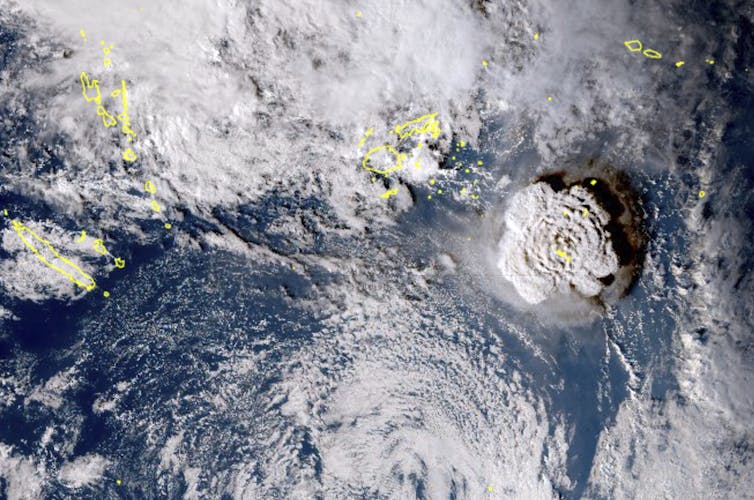
In 2020, my Kyoto University colleague Takatoshi Sakazaki and I were able to use modern observations to confirm implications of Laplace’s theory for the globally coherent vibrations of the atmosphere. Analyzing a newly released dataset of atmospheric pressure every hour for 38 years at sites worldwide, we were able to spot the global patterns and frequencies that Laplace and others who followed him had theorized.
These global atmospheric oscillations are much too low-frequency to hear, but they are excited continuously by all the other motions in the atmosphere, providing a very gentle but persistent “background music” to the more dramatic weather fluctuations in our atmosphere.
Laplace’s work was a first step on the road to our modern computer forecasting of the weather.
Kevin Hamilton does not work for, consult, own shares in or receive funding from any company or organization that would benefit from this article, and has disclosed no relevant affiliations beyond their academic appointment.
This article was originally published on The Conversation. Read the original article.







